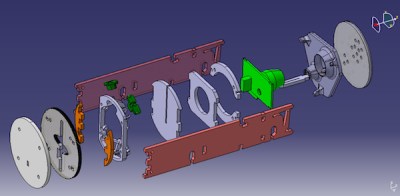[Lumilectric] is getting ready for Burning Man and made herself this fantastic fiber optic LED skirt.
She’s always been fascinated by fiber optics and the effect they create, so she wanted to try using them in a project, and this was just the ticket. The tricky part was figuring out how best to couple cheap fiber optic strands off eBay with a strip of RGB LEDs.
In the end she figured out a way to make rudimentary fiber optic coupling joints using vinyl tubing. She managed to fit 17 strands of 0.5mm diameter fiber into a 6mm diameter vinyl tube. To improve light transfer when it’s all together, you can gently melt the ends of the fiber optics together to glaze the plastic into a single clear surface — don’t melt the vinyl though!
Continue reading “Jellyfish Inspired LED Skirt For Burning Man”


















